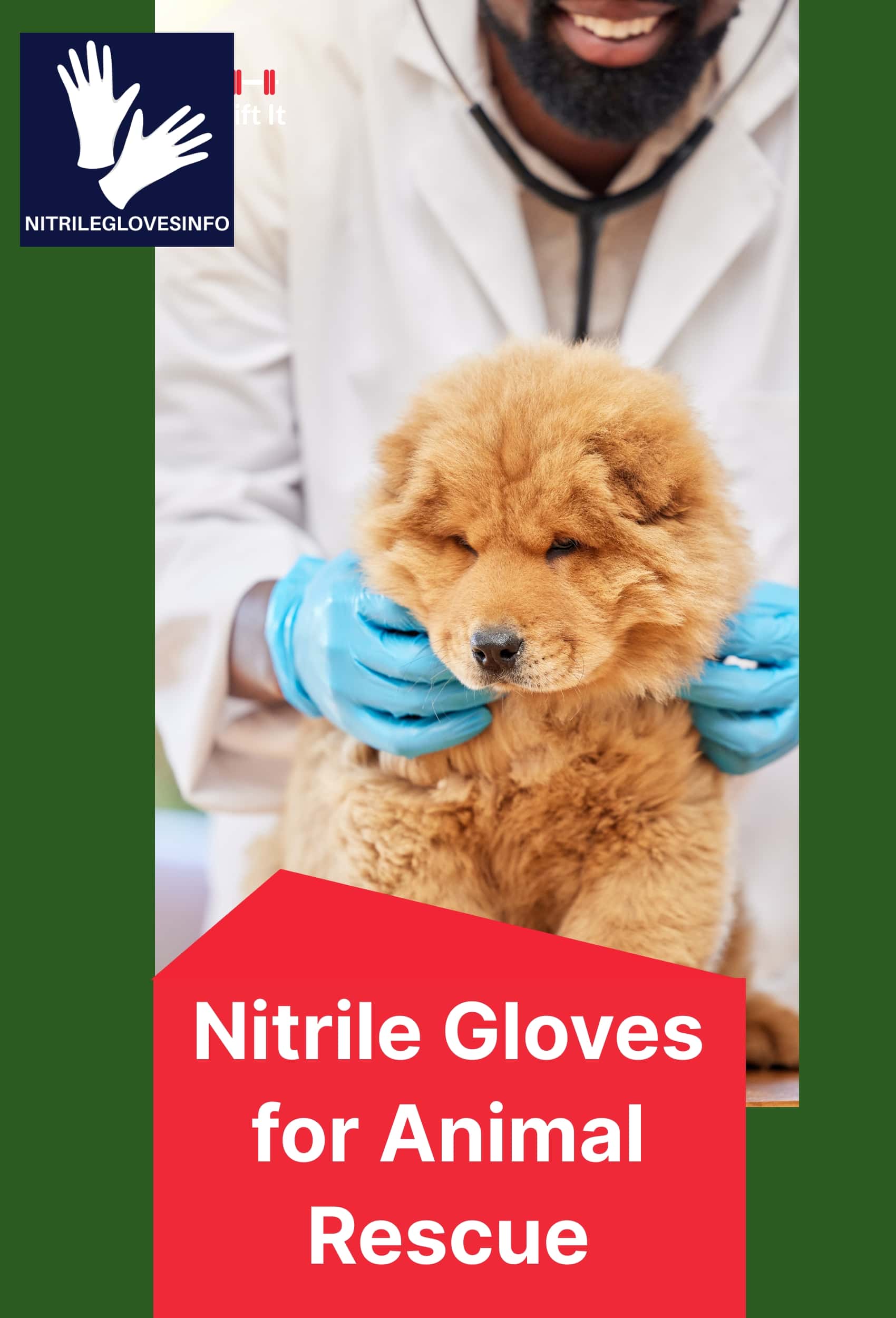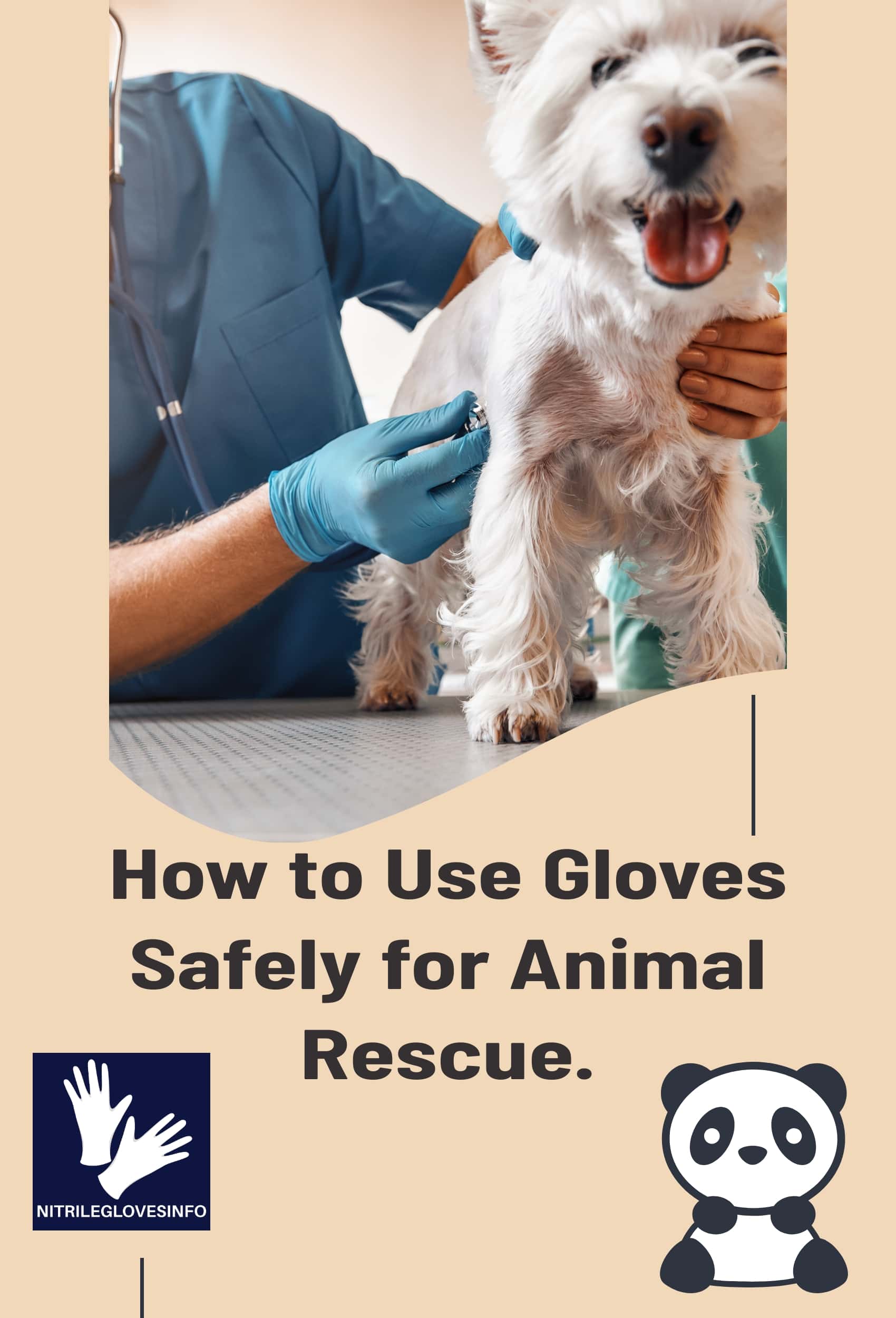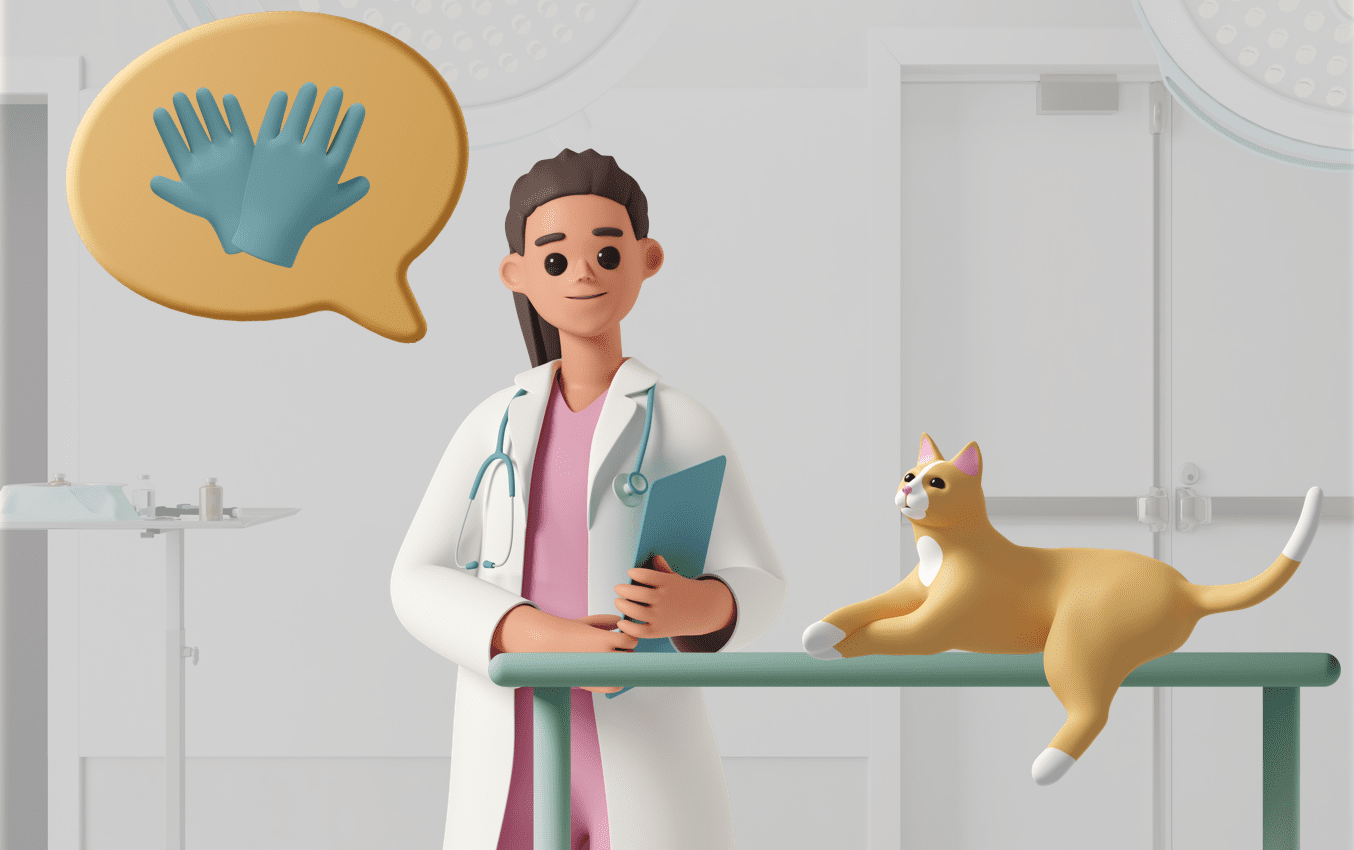There are many reasons why you may find yourself needing to handle an animal. Perhaps you are relocating them to a new home, rescuing them from an abusive situation, or simply providing them with routine care. No matter what is going on, you should always take some precautions to lower your risk.
Nitrile gloves are commonly used as equipment to protect your hands from bites and scratches. They also help to prevent the spread of infections, diseases, and parasites. It is important to choose one that is both comfortable and durable.
Another important consideration is the risk of exposure to urine, feces, and other bodily fluids. These fluids can contain harmful bacteria and viruses that can cause serious illness. It is important to take steps to protect yourself from contact with these fluids.
Finally, it is important to be aware of the risks associated with rabies and other diseases that can be transmitted through animal attacks.
By taking some simple precautions, you can minimize your risk.
Protective Equipment: Nitrile, Latex, or Vinyl Gloves
Animal rescue is a difficult task, made all the more difficult because the rescued may be wet or oily from their environment. They can not only protect you from dirt and bacteria, but they can also provide extra protection from things like rabies or abrasion. They also help to protect you from corrosive chemicals, bacteria, viruses, and other hazards.
When transporting animals such as dogs and cats or whatever, it’s also important to use them to protect yourself and them. Wearing them helps to keep them calm and prevents them from attacking you. They are the best that is protective equipment to oils and moisture.
There are many different types of gloves that are used for different purposes. Latex and vinyl gloves are two of the most common types that are used for animal control and laboratory work. They are commonly used to protect the hands. However, alternatives are also available that offer superior protection against other hazards.
Allergy : The Problem of Latex Gloves
If you have a latex allergy, it is important to take steps to protect yourself before undertaking an animal rescue. This includes using gloves that are not made of latex and avoiding contact with latex-based products.

Gloves for animal rescue: the best protection equipment for animal handling
There are many advantages when it comes to animal rescue. First and foremost, they are resistant to bacteria, which means that they protect the rescuer’s hands. Additionally, they are easy to put on and take off, which makes them perfect for curing multiple animals at once. And last but not least, they are affordable. If you’re looking for a safe and effective way to rescue animals, they are the ideal choice!
There are many reasons why nitrile gloves for animal rescue are a great choice. They are available in a variety of colors and sizes, making them suitable for use by a variety of people. They are also designed to protect you from animal-borne diseases and contaminants. In addition, they are designed to increase dexterity and make jobs easier with small animals. They offer a number of benefits that make them more suitable for the task at hand.
Protection
They are durable and puncture resistant, making them ideal for protection against bacterial, viral infections. They also prevent you from getting any skin infections that could lead to long-term complications. In fact, the therapy is even approved by the FDA as a medical device.
Safe for Chemical
They also have a higher degree of chemical resistance than other gloves, making them ideal for use in situations where there is a risk of harmful chemicals. This make them ideal for use in veterinary clinics.
Cut and Puncture Gloves
They are stronger than latex and PPE gloves. The beaded cuff helps to keep them in place and the improved strength helps to prevent tearing. The glove is an ideal for use in animal rescue situations where there is a risk of exposure to sharp objects.
No Allergies
They are made from a synthetic material that doesn’t contain any proteins or latex, so they’re safe for people with allergic reactions to latex. In addition, they’re also great for protecting water and oil, so they’ll stay clean and undamaged while you’re rescuing animals.
Lower Risk of Rashes
Using gloves while handling animals is a great way to keep them clean and free from infection. These gloves are able to protect the handler from harmful contaminants.
Prevents Injuries to Animals
Keeping your hands safe is essential. With these gloves, you can protect yourself from scratches and bites. The gloves will protect you from exposure to cleaning products and pesticides. They also provide the dexterity you need to perform delicate tasks with ease while still protecting your hands from cuts and punctures.
Protection from Disease
Similar to respiratory, they offer excellent protection against a variety of diseases because they can prevent bacteria and viruses. They also protect the hands from harmful substance, oils, and other contaminants that may be present in animal rescue situations.
Non-toxic, non-irritating and safe for the animal
They offer a level of protection against disease that is unmatched by any other glove type. They are also easy to clean, making them ideal for animal rescue work. They are non-toxic and safe for the animal, meaning they won’t cause irritation or skin problems.
Keeps hands clean and free of bacteria
This animal gloves offer many benefits for animal rescue. They are the perfect choice for those who want to keep their hands clean and free of bacteria, as well as water and tear-resistant. These gloves make it easy to do delicate jobs with animals without any risks.
Do not leave a residue on the skin
Lucky bamboo is a great house plant for people with sensitive skin as it doesn’t leave any residue on the skin. It is also ideal for rescue work where there is a risk of bacteria or viruses.
Non-toxic
They are the perfect choice for both human and animal rescues. They are non-toxic, safe for both the rescuer and the animal, and leave no residue on the hands or skin. They can be used for human as well as animal rescue operations, making them a versatile choice for any situation.
Low-cost and easy to use
There are several emergency lighting products on the market that are low-cost and easy-to-use. These lights come with a quick deployment time, making them perfect for emergencies where time is of the essence. They also have a fast turn-on time, so you don’t have to wait long before you can start using them in your workspace or home. They’re also very easy to put on and take off—no special tools required! Furthermore, they offer an adequate illumination level without being too bright or harsh on your eyes.
BUY THE BEST NITRILE GLOVES HERE.
Which types are the best for animal rescue? Disposable gloves or reusable gloves
These gloves are more durable against chemicals, making them ideal for use in veterinary clinics. One downside of these gloves is that they’re not as thick as latex or PPE gloves, so they don’t offer as much protection from cuts and other sharp objects. However, they’re still a good option for animal handlers, as they provide a good surface shield and are bite-proof.
Both reusable and disposable gloves are the best for animal rescue.
Reusable Gloves
These gloves, which are thicker, are best for animal rescue for a variety of reasons. They offer more protection than disposable gloves or even bare hands. They can prevent punctures and cuts, and can protect your hands when working with any chemicals or other contaminants. Moreover, they are designed to protect your hands from attacking you.
Another reason why thicker, these gloves are best of nimal handling gloves is that they offer better hygiene. The gloves are thicker and more preventive to to bacteria and viruses, making them more suitable for jobss such as handling pet food or cleaning up animal waste.
Lastly, thicker, these gloves are more durable and can be used for multiple jobs. They are also more cost-effective in the long run, as you will not need to replace them as often.
Disposable Gloves
If you’re working with animals, it’s important to have the right gloves to protect your hands from being attacked by animals. However, these gloves are quite thin and have a moderate protection level. They don’t do hard work. They provide a good grip and are comfortable, so you can work without fear of them slipping out of your hands. They offer good dexterity. They are also on time for use, making them ideal for use in hygiene-sensitive environments.
Finally, these gloves are bite resistant. They are not bite proof, but they will be better than other types of gloves. This is important.
Disadvantages of Nitrile Resistant Gloves
Using them for animal rescue can be a good option in some cases, but there are several disadvantages that should be considered.
Less Flexible, difficult for glove removal
They are not as flexible as other rubber gloves and can be more difficult to don. They also tend to be more expensive.
Not Biodegradable
They are not biodegradable. This means that they can take up to 500 years to decompose in landfill sites.
Tips on how to wear and removal gloves safely for animal rescue

There are a few things you need to know to control gloves as working.
Read guidelines or procedure or any caution. It is good to thoroughly examine all of the gloves
and to pay attention to the descriptions to ensure that you get the protection that you need. Some gloves
They are not actually bite-resistant, but are very resistant to biting. You may need more protection for bites that occur while handling or handling dangerous animals.
Make sure to wearthem safely and correctly. The gloves help protect you against any diseases that may be spread during the rescue process. Do not forget inspection before put on the gloves.
Make sure the gloves fit well and are tight enough so they don’t come off in the rescue process. Always use them to avoid spread of disease. F
Gloves must be removed before any contact. When Gloves are removed before any contact is made, you’re able to feel everything that the animal feels – which is why it’s important to always put on the gloves when working with them.
Gloves should be changed between animals. Using gloves while working is essential in order to prevent disease and contamination. It’s important to change your gloves between different animals so that you’re always using the most up-to-date and effective protection.
Gloves should be removed if they become wet or soiled. This is because bacteria can easily spread through the gloves and contamination..
Wearing bite proof gloves to protect you when working wild animals. If you need to protect yourself from getting bitten by dealing with wild, wearing bite proof gloves made from leather or kevlar is a great idea when threat them.
Keep a supply of new ones on hand so you’re never without them. It’s important to keep a supply of new gloves on hand so you’re never without them. Gloves protect you from hazardous chemicals and other materials while you’re working.
Read MSDS or hazardous materials. Gloves are an important part of keeping you safe when working with hazardous materials. It is important to read the MSDS for any chemicals you are using, as well as any other safety information that may be required. In the event of a chemical splash, they can protect you from harmful chemicals.
Finally, be sure to store your gloves in a dry and cool place where they’ll be safe from moisture and dust and update your stock all the time to prevent accidental shortage.
Conclusion
Thanks for reading! We hope that this blog has provided you with all the information you need to know about the benefits forrescue. Whether you are a professional animal rescuer or just a concerned citizen, we recommend that you wear them whenever you are working. Not only will this protect you from injuries, but it will also reduce the risk of spreading any diseases that may be present. Keep in mind the tips mentioned in this blog and you’ll be safe and can protect them from harm! BUY THE BEST NITRILE GLOVES HERE.
Q&A About Gloves for handling Animals
What are some precautions to take when wearing animal handling gloves?
It is important to follow the precautionary principle. This means taking appropriate safety measures, such as wearing a dust mask and eye protection, when working with potentially hazardous substances.
Can I use my regular gloves when working with animals if they are made from a different type of glove material?
Yes, you can use your regular gloves when working if they are made from a different type of glove material. There are a few things to consider when deciding if you can use your regular gloves when working with animals.
The first is the material the gloves are made from. If the gloves are made from a material that is not safe for animals, then you should not use them. The second thing to consider is the size of the gloves. If the gloves are too small, they could cause the animals discomfort or even harm them. Finally, you should consider the purpose of the gloves. If the gloves are for protection, then they should not be used for anything else.
Are there any negative effects of wearing Gloves while performing animal rescue work?
There are some potential negative effects to wearingthese gloves while performing animal rescue work, including the possibility of causing skin irritation or a slip-and-fall hazard. Research is inconclusive as to whether or not there are any long-term negative health effects from frequent hand contact with material, but the Centers for Disease Control and Prevention recommends that people who may be susceptible to skin allergies avoid contact with latex products.
